Lace Tellings by Jackie Oates
Jackie Oates and Pete Flood have spent the last two years as folk musicians-in-residence at The MERL, supported by EFDSS. Jackie has worked with community groups in Reading, singing lullabies with the museum’s Friday Fledglings under-5s group and ‘work songs’ with the Mewes Knitters. But the focus of her final piece, Lace Tellings, was inspired […]
King Alfred
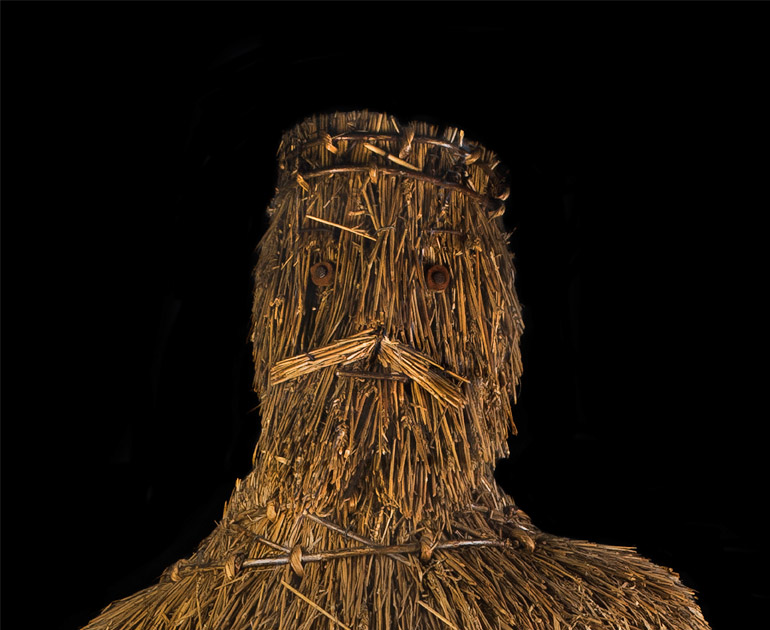
If you think this figure has a regal air about him, you would not be wrong. This is a straw ‘sculpture’ of the Anglo-Saxon King Alfred. Originally, the figure had a wooden sword in one hand and a straw scroll in the other, representing both the warrior and the scholar. It is actually one of […]
Harvest Jug
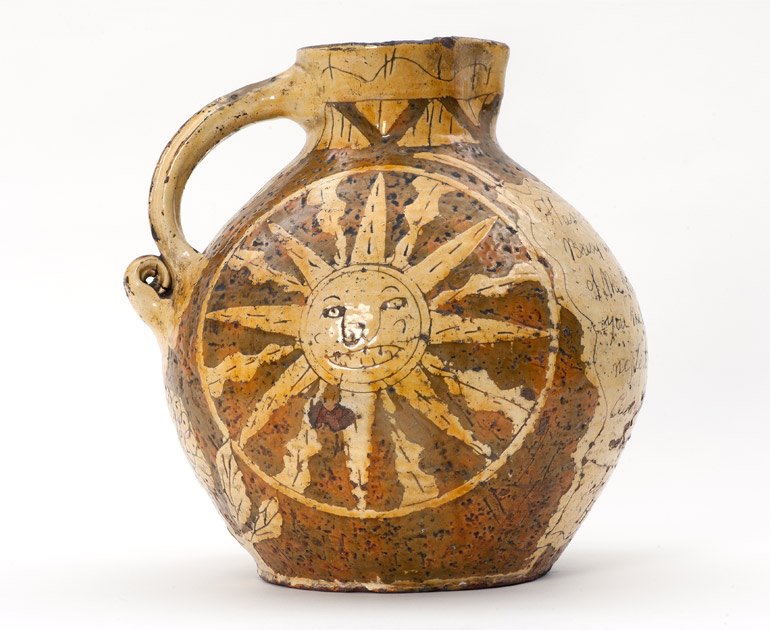
This jug was made for the boozy celebration which comes after a successful harvest. The baking sun sits smiling at the centre of a mariner’s compass on one side, a fitting design for a jug made in the seafaring county of Devon. The varying hues of orange and yellow are rooted in the spent soil […]
Shepherds Walking Stick
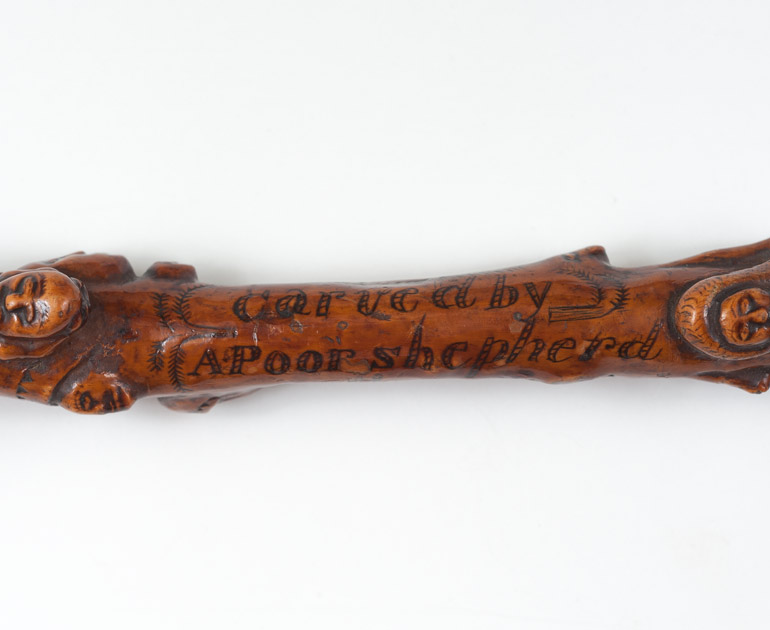
The patience and skill that have been poured into this practical work of art is obvious. That it took years to make is confirmed on the stick itself, which proclaims: ‘Carved by a Poor Shepherd in the years 1844 to 1849’. Alongside this, the shepherd artist also names himself as Henry Beecham from Kidlington, Oxfordshire. […]
Giant Teapot
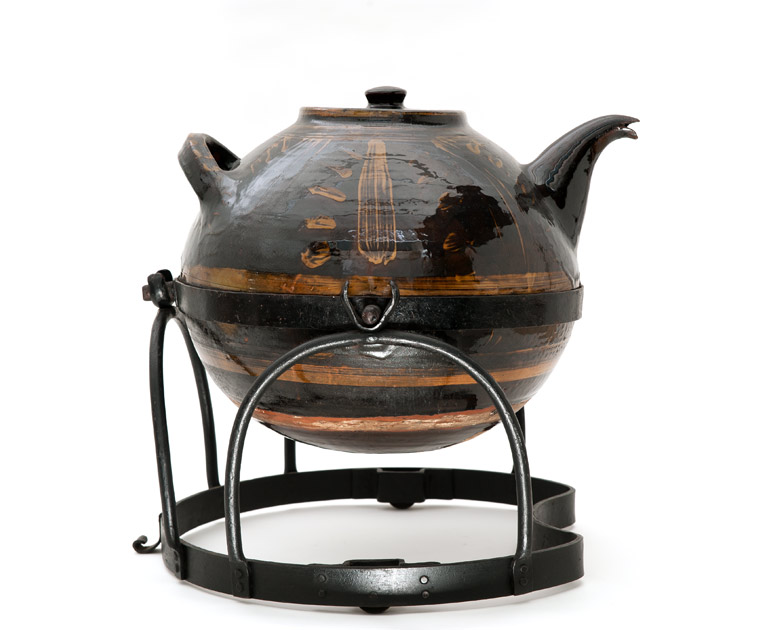
Michael Cardew, Large teapot on iron stand, 1940s This enormous teapot was designed and made by Michael Cardew at Winchcombe Pottery, Gloucestershire. It was part of the British Council’s craft collection and is probably the same iconic teapot that featured in the exhibition of Modern British Crafts held at the Museum of Modern Art, New […]
Wagoner’s Belt
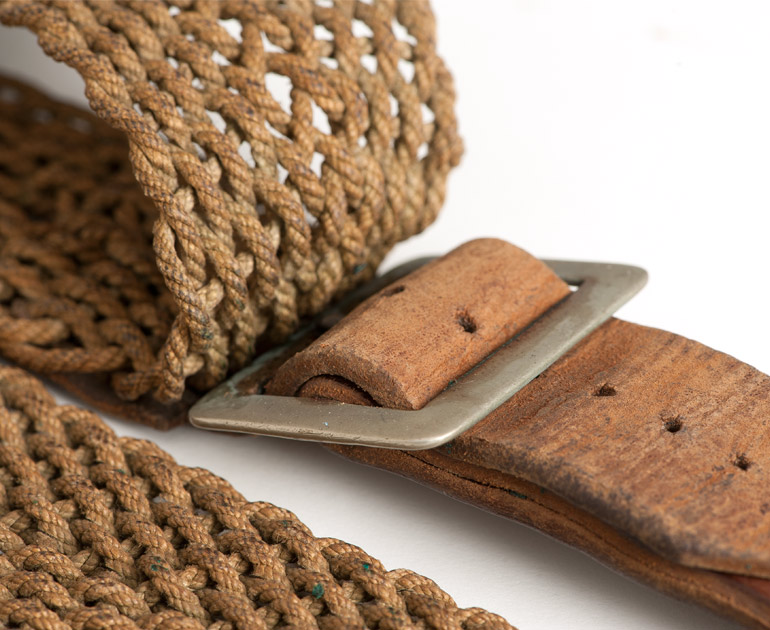
This belt was given to a wagoner on his retirement, in recognition of his great skill. There was once a strict hierarchy on farms. Horsemen were at the top and worked with wagons and ploughs. Everyone knew their rank, referring to each other with terms such as ‘first man’ or ‘fourth boy’.

